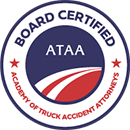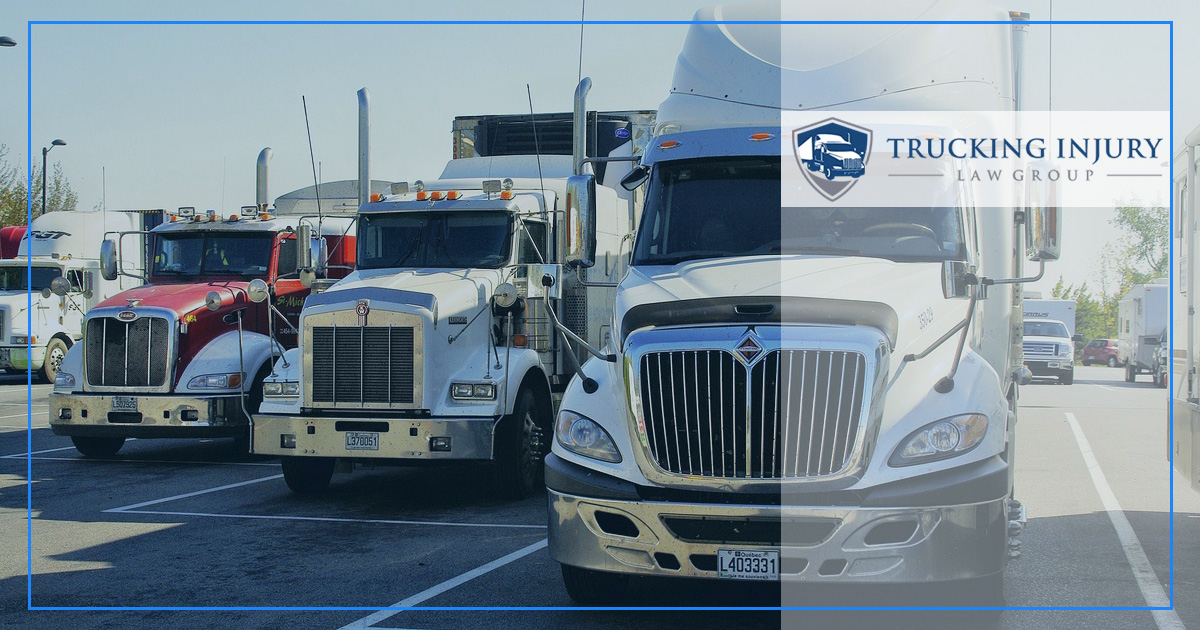How the Pay-Per-Mile Trucker Compensation Model Compromises Safety
The trucking industry is the backbone of American commerce, transporting goods from state to state and shore to shore while fueling our economy. Unfortunately, the compensation model used by most of the trucking industry—pay-per-mile—raises significant safety concerns, as well as some ethical questions from many truck accident lawyers about incentivizing speeding and excessive driving time.
The common concern is that this model, while seemingly straightforward and efficient, places added pressure and incentives on drivers to take unnecessary risks and put themselves in unsafe working conditions, all of which can lead to potential accidents, injuries, and deaths.
Below, we’ll take a look at how the pay-per-mile trucker compensation model compromises safety, the most common risks it poses, and some potential solutions for a safer trucking industry.
Understanding the Pay-Per-Mile Model
It’s pretty straightforward…the pay-per-mile model pays trucker drivers based on the number of miles they drive.
At first glance, that seems fair, right? The more you drive, the more you earn. However, the problem is that this model incentivizes drivers to cover as many miles as possible, often at the expense of their safety and well-being, as well as that of others on the road.
A few of the issues that can arise include:
- Pressure To Maximize Miles: Drivers face understandable economic pressure to maximize their miles so that they can increase their earnings. However, this can lead to dangerous practices, such as speeding, driving for longer hours without adequate rest, and ignoring adverse weather conditions.
- Increased Accident Potential: The desire to earn more can push drivers to make these unsafe decisions, not only endangering themselves but also compromising the safety of others on the road.
- Fatigue: Fatigue is a major safety concern in the trucking industry. The pay-per-mile model makes it worse by encouraging drivers to minimize rest breaks to cover more miles. Lack of adequate rest leads to fatigue, increases reaction time, poor decision-making ability, and decreases overall alertness. Fatigue can even increase the likelihood of drug use, according to a Journal of Preventative Medicine and Hygiene study published by the National Library of Medicine. All of these leave drivers more likely to be involved in accidents and put everyone on the road at greater risk.
- Impact on Driver Health: Economic pressures can affect driver health as well as their safety. Long hours, lack of rest, and the physical and mental stress of meeting mileage targets can lead to chronic health issues such as obesity, anxiety, high blood pressure, and sleep disorders.
Pay-Per-Mile vs. Hourly Pay
The average pay-per-mile compensation for truck drivers in the US varies based on experience, type of haul, and endorsements. However, anecdotal data available online suggests that truck drivers generally earn between $0.28 and $0.40 per mile, with more experienced drivers and those handling special loads like hazmat or tankers earning up to $0.85 per mile.
Most drivers log an average of 2,000 to 3,000 miles each week, which results in weekly earnings ranging from $800 to $1,350.
In comparison, the average hourly pay for a CDL Class A Truck Driver in the United States is around $25 per readily available data online, for an average of around $1000 per week.
So, while the pay-per-mile model can mean higher earnings for long-haul drivers and those who cover extensive miles, the hourly model provides a safer experience and more stable income regardless of the distance driven.
Regulatory Challenges
Federal regulatory bodies like the Federal Motor Carrier Safety Administration (FMCSA) have established nationwide rules to help make sure that truckers get sufficient rest, including Hours of Service (HOS) regulations.
These regulations list the maximum number of hours a driver can be on the road within a set time period and mandate rest periods between driving sessions.
However, enforcing these regulations can be challenging, especially when the pay-per-mile model incentivizes drivers to find ways to get around them.
The Role of Electronic Logging Devices
Electronic Logging Devices (ELDs) help monitor drivers’ compliance with HOS regulations. While ELDs have improved enforcement, they’re still not foolproof. Many drivers find ways to manipulate these devices under the pressure to maximize miles.
Bottom line: ELDs fail to address the root cause of the problem—the pay-per-mile compensation model.
Insufficient Penalties and Oversight
While there are penalties for violating hours of service regulations and other safety standards, they’re often just not enough to deter unsafe practices. With so many independent contractors and small operators within the trucking industry, it’s difficult to maintain consistent oversight.
Without more significant penalties and serious enforcement, the pay-per-mile model will continue to undermine safety.
Cost-Cutting Measures
To remain competitive, trucking companies often feel that they must cut costs in areas like vehicle maintenance and driver training.
Poorly serviced or maintained trucks are more likely to experience breakdowns and accidents, while undertrained drivers may lack the skills and experience to handle dangerous situations safely or make safer choices.
Alternative Models of Compensation
Given the safety concerns that come with the pay-per-mile model, finding alternative compensation models is key to reducing accidents and harm, and must prioritize safety and well-being while still providing fair compensation for drivers.
They can include:
- Hourly Pay: One alternative is hourly pay, which compensates drivers based on the number of hours worked rather than miles driven, aligning compensation with safety and compliance with regulations. By removing the incentive to drive as many miles as possible, companies encourage their drivers to take required breaks and rest periods, with feeling like they’re losing money.
- Salary-Based Compensation: Salary-based compensation (a fixed amount paid regularly, typically monthly or bi-weekly) is another alternative that provides drivers with a stable income regardless of how many miles they’ve driven. This reduces the pressure to cover excessive distances and encourages a focus on safe driving practices.
- Hybrid Models: Hybrid models combine elements of pay-per-mile, hourly pay, and salary-based compensation. For example, drivers could get a base salary with bonus incentives for safe driving, timely deliveries, and customer satisfaction. This can balance financial incentives with safety and well-being and promote a healthier and safer work environment.
Trucking Regulations
Government agencies need to find better ways to enforce existing trucking regulations and introduce new ones to address the safety concerns of the pay-per-mile model.
These may include things like stricter penalties for violations and greater support for technological advancements and usage. More collaborative programs between the trucking industry and government regulatory agencies could lead to meaningful improvements in trucking safety and efficiency.
At Trucking Injury Law Group, we understand that, while the pay-per-mile trucker compensation model may be financially attractive, in reality it compromises safety in the trucking industry and the well-being of everyone on the road, making some of the most catastrophic crashes, like head-on tractor-trailer collisions.
The pressure (and incentive) to maximize miles driven has been proven to lead to fatigue and dangerous driving behaviors that further undermine safety. We must explore better compensation models, leverage technology, and encourage collaboration to create a safer work environment for truckers and a better driving experience for all.






